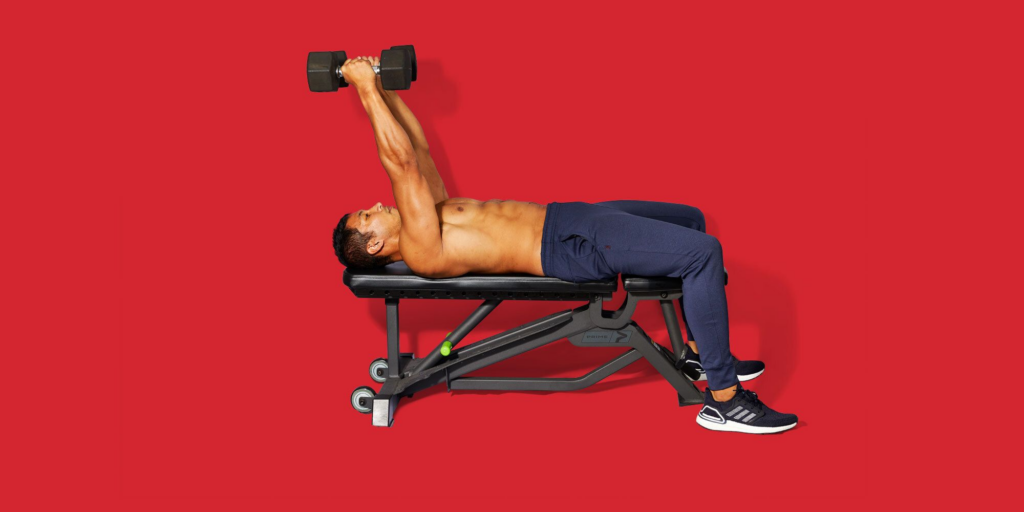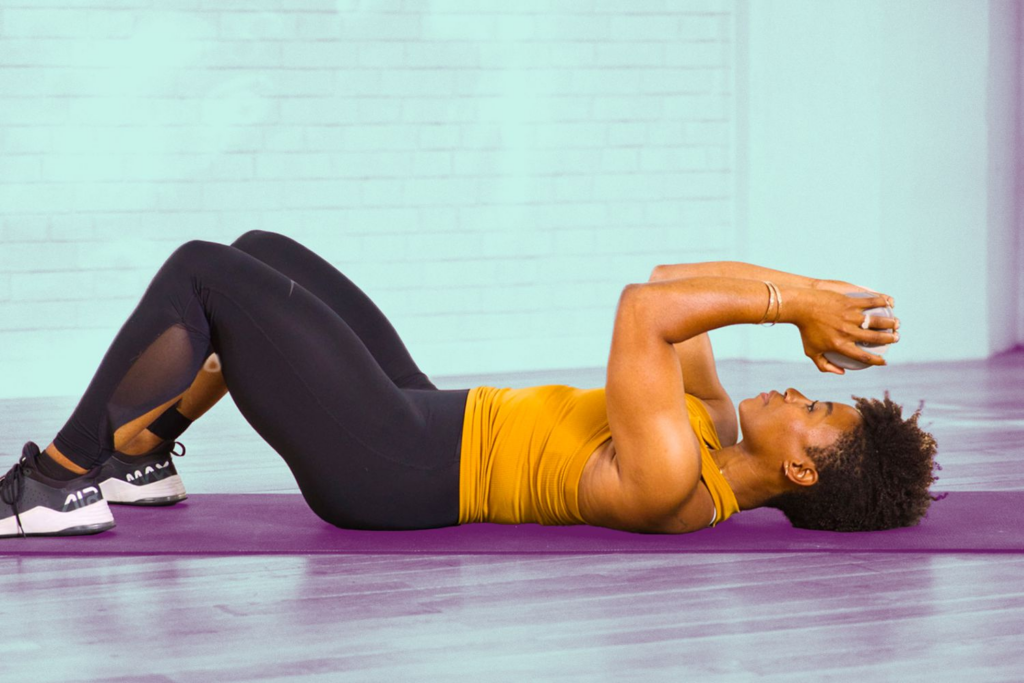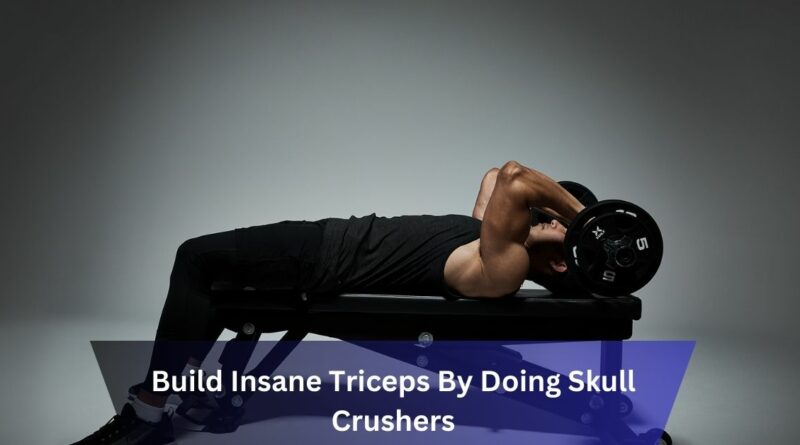Build Insane Triceps By Doing Skull Crushers – Laz – Tymoff!
Are you ready to sculpt jaw-dropping triceps that turn heads? Look no further than the powerhouse exercise known as skull crushers.
So, to build super strong triceps with skull crushers, make sure to do them right. Practice regularly, use good form, and try different variations. You’ll see amazing results and have awesome triceps in no time!
In this guide, we’ll delve into the secrets of building insane triceps with Laz and Tymoff’s expert tips and techniques. Get ready to unleash your arm gains and command attention like never before!
What Is The Triceps Brachii Muscle, And Why Is It Important?
The triceps brachii muscle, commonly referred to as “tris,” is a vital muscle group located on the backside of your upper arm. Comprising three heads—the long head, lateral head, and medial head—it plays a pivotal role in extending the elbow joint.
This extension is essential for various pushing movements, such as pushing objects away from the body or pressing weights overhead. Moreover, a well-developed triceps muscle not only enhances functional strength but also contributes to the aesthetic appeal of the arms, creating the sought-after horseshoe shape admired by fitness enthusiasts.
How Can Skull Crushers Help In Building Triceps Muscles?
Skull crushers, also known as lying triceps extensions, are renowned for their efficacy in isolating and targeting the triceps brachii muscle. This compound exercise involves extending the arms against resistance while lying on a bench, primarily engaging the elbow joint.

By performing skull crushers with proper form and technique, you can effectively stimulate the triceps muscle fibers, inducing hypertrophy or muscle growth. This hypertrophic response is crucial for sculpting well-defined, impressive triceps that command attention and admiration.
What Are The Steps To Perform Skull Crushers Correctly?
- Equipment: To perform skull crushers effectively, you’ll need the following equipment:
- Barbell: Choose a barbell of appropriate weight that allows for strict form and controlled movements.
- Bench: Utilize a sturdy bench with a flat surface, ensuring stability and support during the exercise.
- Lie Flat on a Bench: Lie on your back on the bench, ensuring your entire back is in contact with the surface.
- Feet Placement: Position your feet firmly on the floor, shoulder-width apart, to provide a stable base and maintain balance throughout the exercise.
- Grip the Barbell: Grasp the barbell with an overhand grip (palms facing forward), ensuring your hands are shoulder-width apart. This grip width promotes optimal muscle engagement and joint alignment.
- Barbell Positioning: Hold the barbell directly above your shoulders, arms fully extended. This is your starting position for the skull crusher exercise.
Some Skull Crusher Exercise With Precision Using The Following Steps!
Lowering the Barbell:

Initiate the movement by slowly lowering the barbell towards your forehead, maintaining control and stability throughout. Keep your upper arms stationary and perpendicular to the floor, allowing the elbows to flex as the weight descends.
Feeling the Squeeze:
Experience the tension building in your triceps as the barbell approaches your head. Aim to lower the barbell until it is a few inches away from your forehead, ensuring a deep stretch in the triceps muscle without compromising joint integrity.
Read: Find8929 – Navigating The Technological Frontier!
The Powerful Extension:
Drive the barbell upwards in a controlled manner, utilizing the strength of your triceps to extend the arms fully. Visualize pushing the ground away with your hands to maximize triceps activation and engage the muscle fibers effectively.
Locking Out:
Reach the top position of the movement by fully extending your arms and locking out your elbows. Squeeze your triceps forcefully at the peak of contraction, emphasizing muscle engagement and enhancing muscle definition.
Return to Starting Position:
Complete the repetition by smoothly lowering the barbell back to the starting position above your shoulders, maintaining control and stability throughout the descent.
Tips for Optimal Technique Build Insane Triceps By Doing Skull Crushers:
Controlled Descent:
Focus on controlling the descent of the barbell, resisting the urge to drop it rapidly towards your forehead. The eccentric (lowering) phase of the exercise is critical for inducing muscle damage and stimulating muscle growth.

Core Engagement:
Maintain a stable and engaged core throughout the exercise to support your lower back and pelvis, minimizing the risk of excessive arching or discomfort.
Elbow Position:
Keep your elbows tucked in close to your sides throughout the movement, avoiding excessive flaring that can place undue stress on the shoulder joints. This alignment promotes optimal triceps activation and joint mechanics.
Full Range of Motion:
Aim for a full range of motion at the elbow joint, allowing the barbell to travel through a complete range of motion from full extension to deep flexion. Avoid locking out the elbows at the top of the movement, as this may reduce muscle tension and compromise muscle engagement.
Variations Of Skull Crushers For Different Triceps Workouts!
Yes, in addition to the traditional barbell skull crushers, the article explores several variations tailored to target the triceps muscles from different angles and intensities. These variations include:
- Utilizing an EZ-curl bar with angled grips can provide a more comfortable hand position and alter the muscle recruitment pattern, enhancing the effectiveness of the exercise.
- Performing skull crushers with dumbbells allows for greater unilateral (one-sided) focus, helping to address muscle imbalances and strengthen each arm individually.
- This variation involves extending the arms overhead with the barbell before initiating the lowering phase, challenging shoulder stability and emphasizing triceps activation throughout the movement.
- While not a direct variation of skull crushers, the close-grip bench press targets the triceps muscles effectively, simulating a similar pushing motion while incorporating additional chest and shoulder involvement.
By incorporating these variations into your triceps workout routine, you can enhance muscle stimulation, prevent plateaus, and achieve well-rounded triceps development.
When should skull crushers be included in a workout routine?
Skull crushers can be strategically incorporated into your triceps workout routine to optimize muscle growth and strength gains. Consider the following guidelines when scheduling skull crushers within your training program:

Place skull crushers towards the latter half of your triceps workout routine, following compound exercises that recruit multiple muscle groups, such as dips or close-grip bench presses. Perform skull crushers when your triceps muscles are sufficiently warmed up and activated, ensuring optimal muscle engagement and performance during the exercise.
Adjust the volume and intensity of skull crushers based on your training goals and fitness level. Beginners may start with lighter weights and higher repetitions, gradually progressing to heavier loads and lower rep ranges as strength and proficiency improve.
Read: wellhealthorganic
How Can Beginners Avoid Injury While Performing Skull Crushers?
Start with Lighter Weights:
Begin with a conservative weight that allows for proper form and technique, focusing on mastering the movement pattern before increasing resistance.
Focus on Form:
Prioritize proper technique and execution throughout the exercise, emphasizing controlled movements and avoiding momentum or excessive swinging.
Utilize Spotter or Partner:
If possible, enlist the assistance of a spotter or training partner to provide guidance, support, and assistance during skull crushers, especially when lifting heavier loads.
Gradually Increase Intensity:
Gradually progress in weight and intensity over time, allowing your muscles and connective tissues to adapt to increased demands while minimizing the risk of overuse injuries.
Listen to Your Body:
Pay attention to any signs of discomfort, pain, or fatigue during skull crushers, and adjust your technique or workload accordingly to prevent strain or injury.
Some common mistakes to avoid while performing skull crushers!
- Avoid selecting a weight that is too heavy, as this can compromise form and technique, increasing the risk of injury and reducing muscle engagement.
- Maintain a full range of motion throughout the exercise, avoiding partial repetitions or limited joint movement that may diminish muscle stimulation and growth potential.
- Keep your elbows tucked in close to your sides throughout the movement, avoiding excessive outward rotation or flaring, which can place strain on the shoulder joints and compromise stability.
- Focus on controlling the descent and ascent of the barbell during skull crushers, avoiding rapid or jerky movements that can lead to loss of balance, instability, or muscle strain.
Can skull crushers be done at home without specialized equipment?
Yes, skull crushers can be adapted for home workouts using alternative equipment and setups that mimic the movement and resistance of traditional barbell skull crushers. Utilize dumbbells to perform lying triceps extensions, mimicking the movement pattern of skull crushers while providing unilateral resistance and muscle engagement.

Attach resistance bands to a stable anchor point or door frame and perform triceps extensions by grasping the bands and extending your arms overhead, providing adjustable resistance and versatility for home workouts.
Perform bodyweight skull crushers using a sturdy bench or elevated surface, assuming a plank position with hands placed on the bench and lowering your body towards the ground while maintaining tension in the triceps muscles.
How often should skull crushers be performed for optimal triceps growth?
The frequency of skull crusher workouts depends on various factors, including individual fitness goals, training experience, recovery capacity, and overall workout programming. However, for most individuals aiming to maximize triceps growth and strength gains, incorporating skull crushers 1-2 times per week into their triceps-focused training routine is typically sufficient.
FAQs:
1. Are skull crushers enough to build triceps?
While skull crushers are an effective exercise for triceps development, a well-rounded workout routine that includes a variety of exercises targeting the triceps from different angles is ideal for comprehensive muscle growth and strength gains.
2. Do skull crushers make you stronger?
Yes, skull crushers can increase triceps strength and endurance when performed consistently with progressive overload, gradually increasing resistance, volume, or intensity over time to stimulate muscle adaptation and growth.
3. Do skull crushers work all three heads?
Yes, skull crushers target all three heads of the triceps muscle—the long head, lateral head, and medial head—contributing to overall triceps development and definition when performed with proper form and technique.
4. What’s a good weight for skull crushers?
The appropriate weight for skull crushers varies depending on individual strength levels, training experience, and fitness goals. Start with a weight that allows for proper form and control, performing 8-12 repetitions with moderate difficulty, and adjust as needed based on your performance and progress.
Conclusion:
So, to sum it up, mastering skull crushers is super important for strong and big triceps. Just stick to good form, try different variations, and keep at it regularly. You’ll see awesome results and have everyone amazed by your impressive triceps!
Read Also:
